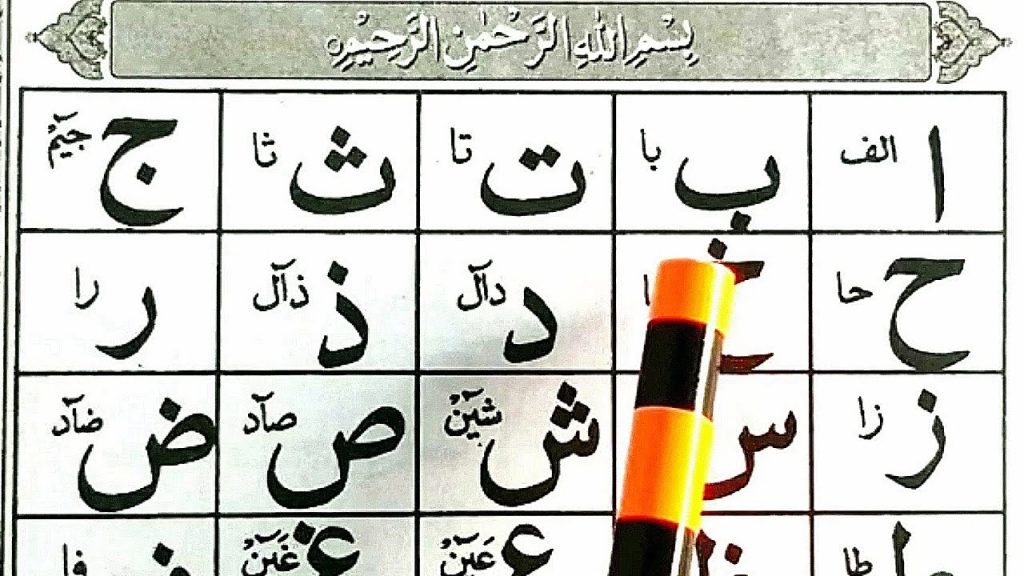
Noorani Qaida is, without a doubt, a necessity for the accurate and proper reading of the Arabic language for reciting the Quran. It has also been noted that Noorani Qaida is considered the stepping stone for children who are new and want to learn about the Arabic alphabet and its sounds as well as the rules of Quranic recitation tajweed. To effectively deliver Noorani Qaida to children, requires a lot of patience and creativity along with some constructive methods that suit their understanding of things. This article will discuss what are easy methods of learning Noorani Qaida for kids.
1. Start with Basic Alphabet
The basics of teaching Noorani Qaida begin with familiarising students with the Arabic alphabet. It can also be introduced in a fun manner by having students use engaging visual aids such as colorful flashcards. Whenever introducing a certain letter and would always increase interest within the learning process. Charts portraying letters alongside their relative sound would be effective when teaching students as kids tend to be visually motivated.
- Tip: Concentrate on one letter if the aim is for the child to say it accurately before proceeding with another.
- Make use of repetition and rhymes contributing towards making the information easier to grasp.
Let them play games such as matching letters alongside identifying letters mixed within verses of the Quran to enhance their recognition of the alphabet.
2. Phonetic Pronunciation Practice
Due to the focus more resting within, Noorani Qaida takes me to learn phonetics to read the Quran accurately and fluently. Time should be taken when explaining to children how to pronounce each letter in a syllable, and how many syllables make a word.
- Approach: Start with individual characters and then progress to pairs of Huroof-e-Leen and Alif-Madd.
- Make it a habit for children to rehearse after you. In case they get it wrong, correct them in subtle ways.
To facilitate your practice, make use of audio files or any relevant applications that have proper enunciations.
3. Employ Interactive Digital Tools
It is the digital era where Noorani Qaida has ample teaching aids. There are varieties of applications, websites, and videos designed for children, focusing on making the process of responding as thrilling as possible.
Pros:
- Educational interactive applications often come with tests, games, and even a progress record.
- Children can hear native speakers pronounce the letters and words which enhances their accent.
- Visual and animated graphics are strong enough to capture a child’s attention.
Famous Tools:
- Noorani Qaida applications on Android and iOS phones.
- Instructional videos hosted on YouTube that contain cartoons for kids.
4. Add Tajweed Rules in Steps
When children can complete the first section of Noorani Qaida, start explaining the fundamental tajweed rules if you want to enhance your recitation skills. You can deal with one individual rule at a time such as the rules of Ikhfa, Idghaam, and Ghunna to prevent confusion.
Exercising Activities:
Let’s say a tajweed rule existed and then let’s hear what the child had to say in repetition to that phrase.
Begin with simple Quranic Verses and give examples showing how mutlaqi is employed.
5. Set a Schedule
In teaching Noorani Qaida, some degree of methodological constancy is in order. Set aside a stipulated time during the day when Qaida is to be practiced to strengthen muscle memory. It is learned that children benefit more from short and frequent periods of practice than prolonged sporadic sessions.
Suggested Routine:
Start with setting goals for the first 10-15 minutes of each day and work towards each goal for an extended period as the child gains an understanding of the concept.
Balance reading sessions with listening sessions of Quran recitations to build a more comprehensive understanding of these two concepts.
6. Provide Incentives to the Learning Process
Anything that has a set of rules and provides the participants with an incentive will enable them to grasp whatever they are trying to learn with more ease. Integrate this into lessons of Noorani Qaida and have children fully involved with the content.
Reward Ideas:
Stickers, small treats, and/or certificates can be given to the children who have completed a set of chapters.
- Offer oral encouragement for growth in self-esteem.
Examples:
- Letter matching: Arabic letters will be paired with their equivalent sounds.
- Word building: simple words will be formed from letters that have been previously familiarised.
7. One on One Teaching
The one-on-one approach facilitates the learning process since children are able to understand the concepts much better in that way. With parental guidance, teachers and tutors can then walk the kids through every individual step with ease and correct any concerns they have.
Advantages:
- The teacher can tailor the teaching speed to what the child learns.
- There is no delay in correcting a child of their mistakes.
- Children’s motivation is boosted by an ideal teacher-student relationship.
FAQs
1. How long does it take for kids to learn Noorani Qaida?
Your child’s learning speed and age can determine the time it will take for them to learn Noorani Qaida. Usually, it can take an approximation of at least 3 to 6 months of consistent effort for your child to be able to perform Quran recitation after completing Noorani Qaida.
2. What age group would be ideal for someone to start learning Noorani Qaida?
According to observations carried out by various Ustaad Noor inputs, children aged between 4 and 6 tend to pick up and understand new concepts and languages without being deterred. For this reason, this is the best age to start learning Noorani Qaida.
3. How can parents assist their child with learning Noorani Qaida?
As a parent, incorporating the use of digital tools along with having a welcoming environment can go a long way in making your child motivated and engaged while they are learning. Additionally, any sort of praise and encouragement you provide them can enable them to enjoy lessons more.
Conclusion
Noorani Qaida can be effectively taught to children, as this approach can be very enriching for them, provided you have the right creativity, methods, and above all, patience. Thus, interactive tools, personalized attention, or even routines can be incorporated into the teaching as it will allow for a smoother and more enjoyable learning experience. With practice and appropriate direction, these children will be able to both learn Noorani Qaida and strengthen their connection to faith by instilling in them the ability to recite the Quran fluently. This article is the answer to what are easy methods of learning Noorani Qaida for kids.
